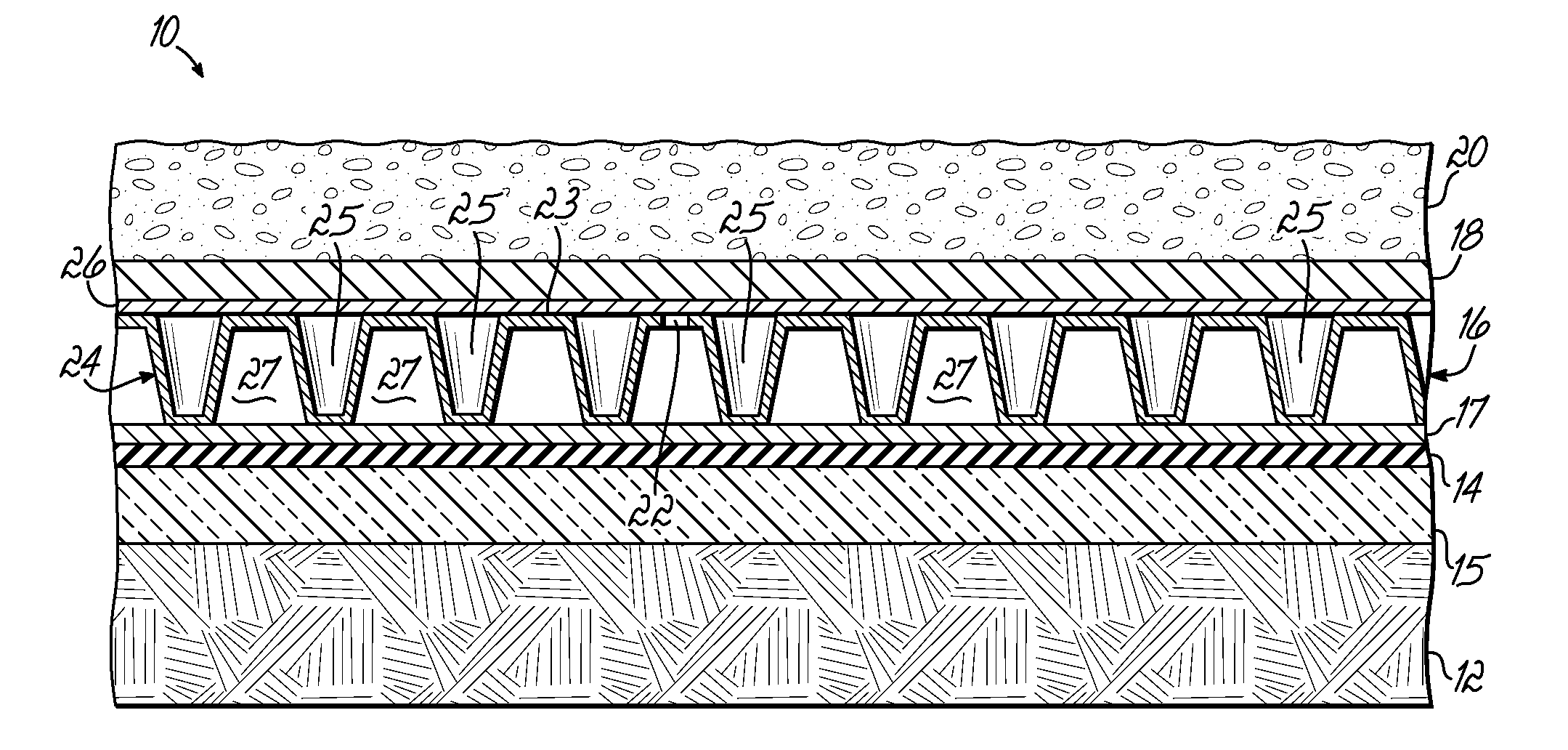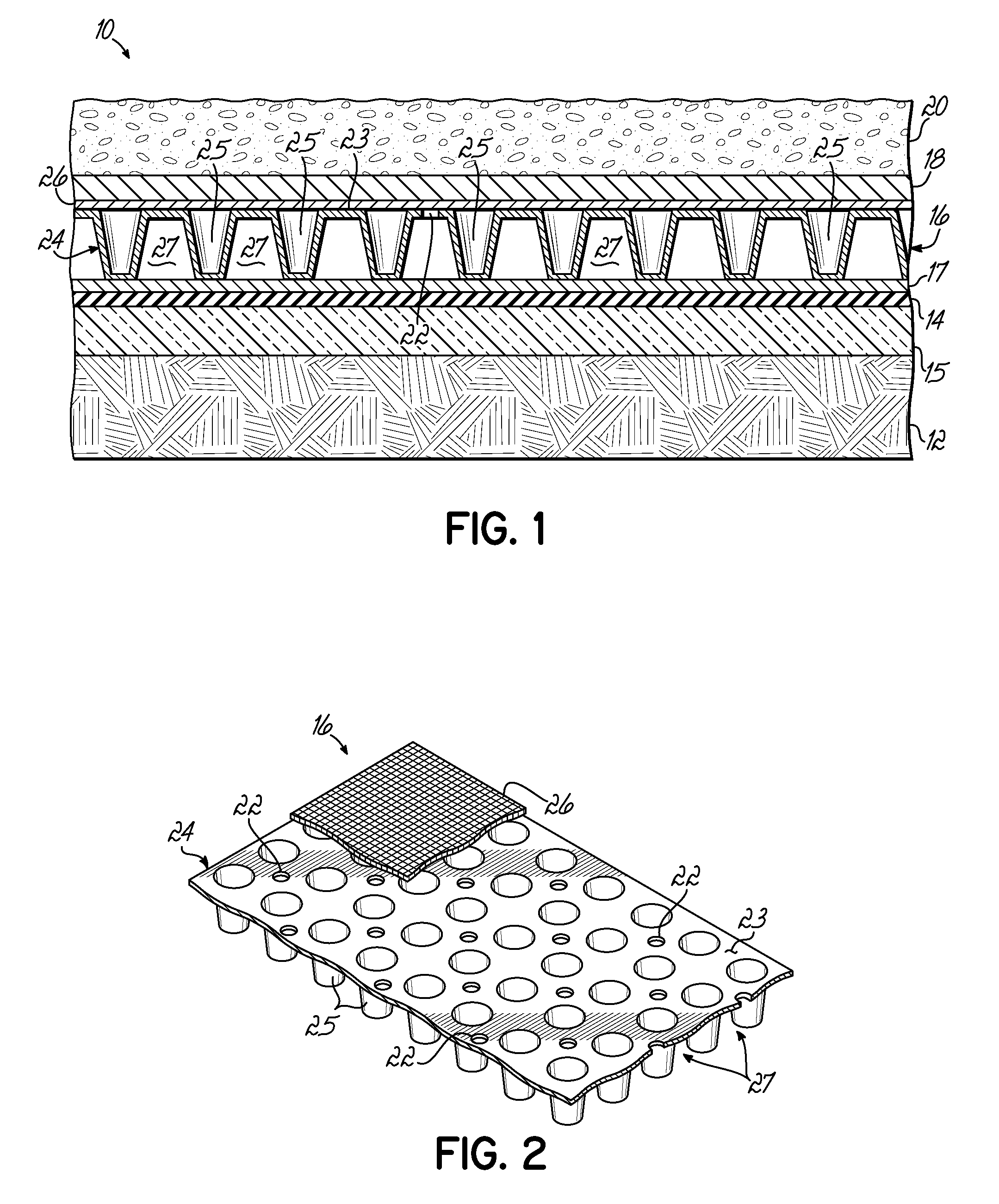Ballasted storm water retention system
a technology of storm water and ballasted roof, which is applied in the direction of roof covering, roofs, constructions, etc., can solve the problems of large excess water can exceed the capacity of storm sewer systems, and the cost of drainage systems can be relatively high, so as to reduce the burden on sewage systems from storm runoff from flat roofs
- Summary
- Abstract
- Description
- Claims
- Application Information
AI Technical Summary
Benefits of technology
Problems solved by technology
Method used
Image
Examples
Embodiment Construction
[0010]As shown in FIG. 1, the present invention is a roof structure 10 that incorporates a roof deck 12 covered with a water barrier layer 14. The roof structure 10 is a flat roof, meaning the slope of the roof is less than about 1 inch per foot. Generally, the slope is about 0.25 inch / foot. As shown, the water barrier layer 14 is a polymeric membrane, although any water barrier layer that is suitable for a flat roof surface can be used in the present invention. Suitable polymeric membranes include EPDM, TPO and polyvinylchloride. These are commonly used on flat roof surfaces. The water barrier layer 14 can be installed in any typical manner. For example, the membrane can be simply loose-laid, held with mechanical fasteners, or fastened with an adhesive.
[0011]Between the roof deck 12 and the membrane 14 can be various layers, as is well known. Typically, one may employ an insulation layer 15 between the roof deck and the membrane.
[0012]Covering the membrane 14 is an optional, protec...
PUM
 Login to View More
Login to View More Abstract
Description
Claims
Application Information
 Login to View More
Login to View More - R&D Engineer
- R&D Manager
- IP Professional
- Industry Leading Data Capabilities
- Powerful AI technology
- Patent DNA Extraction
Browse by: Latest US Patents, China's latest patents, Technical Efficacy Thesaurus, Application Domain, Technology Topic, Popular Technical Reports.
© 2024 PatSnap. All rights reserved.Legal|Privacy policy|Modern Slavery Act Transparency Statement|Sitemap|About US| Contact US: help@patsnap.com









